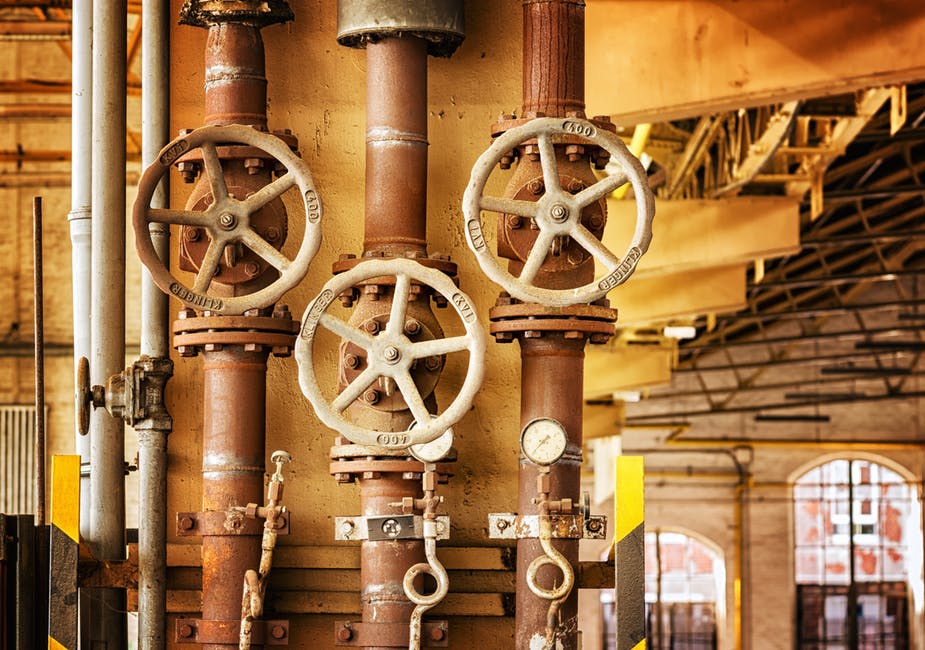How A Non-Return Valve Works
03-13-23

The history of piping goes back to ancient times when clay and stone were used to transport water. Non-return valves have been around, but the modern one is an engineering marvel. It comprises two main components: an inlet and an outlet valve.
The inlet valve opens to allow media to flow into the system. Whereas, the outlet valve remains closed until back pressure is triggered. This helps to prevent backflow and maintain the desired flow direction.
This article will explore how a non return valve works and the types available. We’ll look at the different applications and ways they can be used. Finally, we’ll give some guidelines for selecting the correct valve for your project.
Read on to learn more about non-return valves and how they can help your business.
Valves: How A Non Return Valve Works
Non-return valves are designed to maintain a desired flow direction. Thus, they allow liquids to travel in one direction only. This is quite beneficial when arranged appropriately for its use.
Depending on the valve’s design, they can be used for liquid and gas applications. For example, some non-return valves are explicitly designed for liquids. Whereas, others are intended for air or other gases.
The structure of a non-return valve is relatively simple. It consists of an inlet and an outlet valve, usually connected by a chamber or spring-loaded disc.
The inlet valve opens when pressure exceeds the maximum set point allowing the media to enter the system. The outlet valve remains closed until sufficient backpressure applies. At this point, it allows for flow in the opposite direction.
The importance of non-return valves lies in their ability to prevent backflow and maintain the desired flow direction. Examples include gas pipelines, industrial processes, and water treatment systems.
Without them, these systems could be vulnerable to health hazards from contamination. This also applies to other risks posed by unexpected changes in pressure or direction.
Now that you know how a non return valve works, let’s examine the types of valves.
Types of Non-Return Valves and Applications
Non-return valves come in various designs, including swing check, spring-loaded disc, and ball. Each type offers benefits that are suited to different applications.
Swing check valves are the most common and have been around for centuries. They rely on gravity to close the outlet valve when backpressure applies. Thus, they are ideal for wastewater or sewage systems.
Spring-loaded disc non-return valves use an elastic seal to maintain their closed position. This works until pressure triggers them to open.
These are usually used in delicate processes. For instance, maintaining a consistent flow direction is essential in food or medical operations. In fact, it can be the critical point for the processing protocols.
Finally, ball non-return valves prevent sudden changes in pressure or flow direction. They are often used in oil and gas pipelines and industrial processes where fast-acting valves are required.
Non-return valves are also widely used in domestic plumbing. They protect against water hammer and backflow from the municipal supply. This helps to maintain a steady pressure and reduce the risk of flooding.
Advantages and Disadvantages of Non-Return Valves
Non-return valves have many advantages, including durability and low maintenance requirements. This is quite common in modern piping, but the utility matters most.
Most only require occasional lubrication to function correctly. Thus, they are an economical option for many applications. Furthermore, they can be customized depending on the system’s desired flow rate and pressure rating.
Despite their advantages, non-return valves also have some drawbacks. For example, they can only stick if regularly maintained or adequately sized for the application.
Additionally, since they operate automatically, they can be vulnerable to power outages. This also applies to unexpected events which could cause them to malfunction.
Due to their opening nature, they are unsuitable for manual control applications. This is why other valves, such as diaphragm valves, are preferred for operations.
Non-return valves can be a valuable tool for many systems and applications. By providing protection against unexpected changes in backflow, they help ensure workers’ safety.
They also improve efficiency in critical operations. With the right design and regular maintenance, they can provide adequate service for years to come.
Selecting the Right Non-Return Valve
Choosing the suitable non-return valve for your application is essential for critical equipment. Here are a few tips to help you select the best option:
- Consider the maximum flow rate and pressure rating required for your system
- Make sure that the valve is sized correctly and able to accommodate flows during peak times
- Check that all components are compatible with each other (e.g., inlet and outlet ports)
- Review installation instructions carefully to ensure proper operation
- Regularly inspect and maintain valves as recommended by manufacturer guidelines
When properly maintained, non-return valves can protect against backflow in critical systems. By selecting the valve for the job, you can ensure operations remain efficient.
Piping for Your Needs
Non-return valves provide a cost-effective and reliable solution for preventing backflow.
With their low maintenance and customization applications, they are ideal for flow direction. This is of great importance to waterworks in any industry.
By following the tips outlined above, you can select the best valve for your system.
Thanks to their design and versatility, non-return valves offer peace of mind. This deals with critical operations that require precise flow control.
Now that you know how a non return valve works, get in touch with us if you’re interested in customizing piping for your needs.